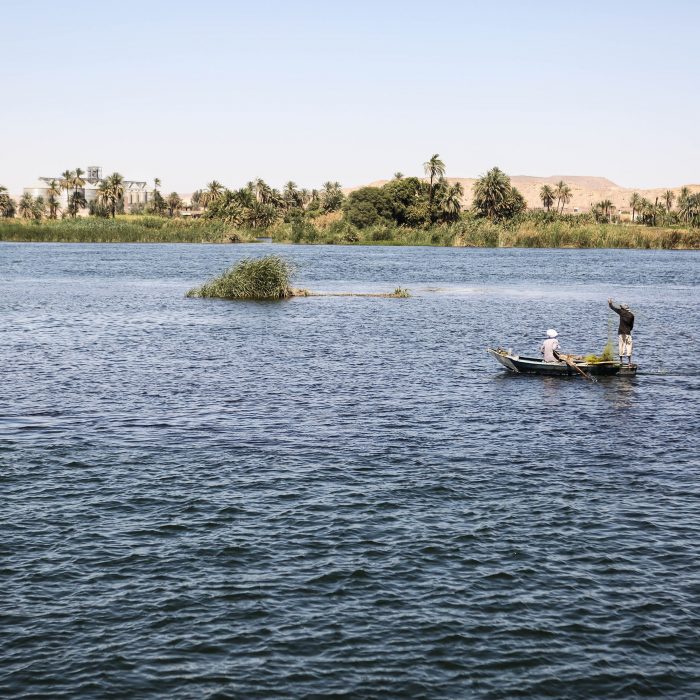
The Nile, over 6671km long is Africa’s longest river, and the source of Egypt’s existence.
Before the construction of regulatory dams in the 20th century, and the Aswan High Dam in 1970, the Nile would flood annually. The flood was the result of spring and summer rains on the East African and Ethiopian uplands. The Nile reached its low water period at the end of May and the flood started at the end of June, reaching its peak in mid-September. The flood brought in up to 110 million tons of mineral-filled sediments, including 75 million tons of soluble minerals (calcium, carbonates, sodium chloride).
The pharaonic economy was first and foremost based on agriculture. Aggradation was essential to the harvests and provided the country’s population – estimated between four and five million people under the New Kingdom – with food. The floods were irregular and inconsistent though, and if late, famine would ensue. The knowledge of the flood calendar and the irrigation of agricultural lands contributed to establishing political power.
The river’s rhythm also affected religious thinking, manifested in art. Hapi was the god of the annual flooding, the divine personification of this natural phenomenon. The Nile also had a role in the celestial and underworlds. Its flood cycle was the symbol of renewal of life, both in the realm of the living and the dead.
The Nile was also the country’s communication and transportation highway. Civil and military ships traveled on this natural traffic lane, as can be seen in many artistic representations. Its current of one to four knots made for easy navigation from South to North, while frequent winds allowed for countercurrent sailing. The Nile’s role in the country’s economy was therefore invaluable, as it permitted the transfer and supply of goods. The flow of civil servants, troops and orders ensured the Kingdom’s political cohesion.
Al Tayeb Sayed
Egyptologist & Accredited Guide
Luxor
